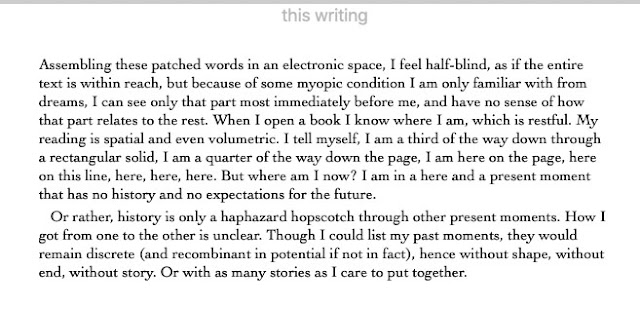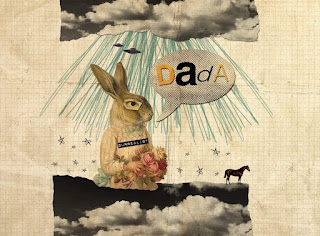Chapter 5 was about kinetic and interactive poetry. I thought it was very interesting because I had no idea that the genre existed. Rettberg says that "words and letters are not only carriers of meaning but material objects that themselves have variable properties" (118). This is true in the piece, dear e.e. It was super overstimulating, because the music was very fast and letters and pictures flew around the room. I did not really understand it. The narrator talks about how they dreamt that E.E. Cummings rearranged their apartment one night, even though they do not have one. I think the hypertext did a good job at showing how strange and disorienting dreams can be. I think the authors might have also been showing how whimsical and strange E.E. Cummings' poems are. The medium definitely had a big impact on the experience of reading. The handwritten font made it seem more intimate, like a personal letter, and the busy screen emphasizes how chaotic the story is. I think the authors were good at encapsulating how nonsensical dreams are, like when she says she doesn’t remember what her couch looked like, she just knew that she had one.
I looked at Brian Kim Steffan's The Dreamlife of Letters. It is a kinetic poem with themes of gender and sexuality. You don't really interact with the poem and I found it a little confusing. The poem goes alphabetically, so it does not have full sentences, which made it difficult for me to stay engaged. It seemed like randomly selected words and you definitely needed to be able to analyze the work and think critically about why the author chose specific words. The screen was very busy and words would jump across the page, which made it more interesting than a normal poem, but it was difficult for me to understand the message the author was trying to get across.
I looked at Brian Kim Steffan's The Dreamlife of Letters. It is a kinetic poem with themes of gender and sexuality. You don't really interact with the poem and I found it a little confusing. The poem goes alphabetically, so it does not have full sentences, which made it difficult for me to stay engaged. It seemed like randomly selected words and you definitely needed to be able to analyze the work and think critically about why the author chose specific words. The screen was very busy and words would jump across the page, which made it more interesting than a normal poem, but it was difficult for me to understand the message the author was trying to get across.
http://collection.eliterature.org/1/works/stefans__the_dreamlife_of_letters.html
Meg Champagne
Meg Champagne






